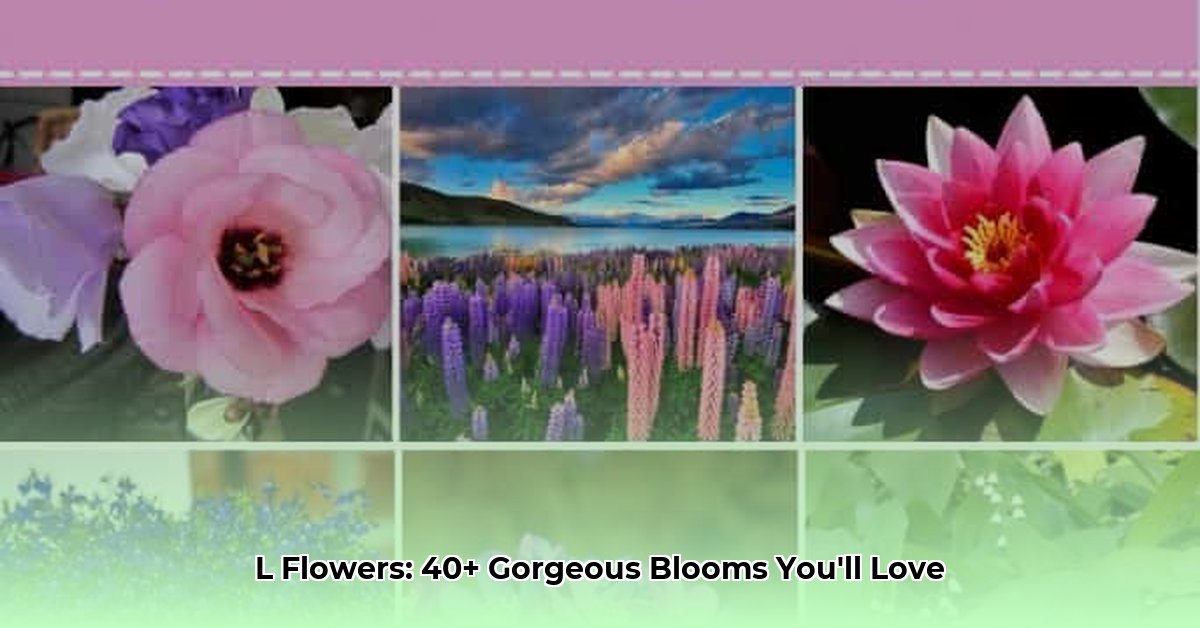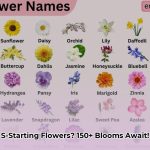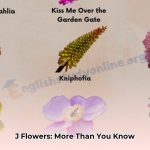Discovering L Flowers: A Gardener’s Delight
The world of blossoms beginning with “L” offers a diverse and delightful mix of colors, shapes, and scents. From the soothing fragrance of lavender to the vibrant hues of lilies, this guide explores these captivating blooms and provides insights into their unique characteristics and cultivation needs.
A Closer Look: Exploring Individual L Flowers
Let’s delve deeper into the characteristics of some prominent “L” flowers, highlighting their beauty and unique qualities.
Lilies: Elegance and Symbolism
Lilies (Lilium spp.), with their trumpet-shaped blooms, are true garden royalty. From the vibrant Asiatic lilies to the fragrant Oriental lilies and the pure white Madonna lily, each variety carries its own charm and symbolic meaning. In Western cultures, lilies often represent purity and innocence, while in ancient Greece, they symbolized rebirth. Today, their presence graces both joyous occasions like weddings and solemn events like funerals, reflecting their diverse cultural significance.
Lavender: Fragrance and History
Lavender (Lavandula spp.) is renowned for its soothing scent, used for centuries in perfumes, soaps, and teas. Its history extends back to ancient Rome, where it was added to baths. Its name likely derives from the Latin “lavare,” meaning “to wash.” Today, lavender’s purple hue often symbolizes royalty and its fragrance evokes serenity. Interestingly, in medieval times, it was believed to have antiseptic properties and was scattered in castles to ward off illness.
Lisianthus: Rose-like Blooms
Lisianthus (Eustoma grandiflorum), with their rose-like blooms, are prized by florists for their elegance and variety of colors, from soft pastels to vibrant jewel tones. They thrive in full sun and consistent moisture, adding a touch of sophistication to any garden or bouquet. Their long vase life makes them a popular choice for special occasions, symbolizing appreciation and charisma.
Larkspur: Whimsical and Vibrant
Larkspur (Delphinium spp.) introduces drama to the garden with its tall spires of vibrant blossoms. Their spurred flowers, resembling tiny dolphins, add a touch of whimsy. The diverse color palette, ranging from deep blues and purples to soft pinks and whites, creates a visual spectacle, attracting pollinators and adding height to garden beds.
Lobelia: Cascades of Color
Lobelia (Lobelia spp.) offers a cascade of vibrant blue, red, and other colors, making it ideal for containers and hanging baskets. These charming flowers attract hummingbirds and butterflies, creating a lively display. Some varieties, like the Cardinal Flower, are known for their fiery red spikes, adding a touch of brilliance to shady garden spots.
Lantana: Butterfly Magnet
Lantana (Lantana camara) is a butterfly magnet with its clusters of multi-colored florets. This vibrant plant thrives in full sun and well-drained soil, adding a burst of color to gardens. While lantana is a popular choice for its cheerful blooms, some varieties may exhibit invasive tendencies in warmer climates, so it’s important to choose appropriate cultivars.
Linaria: Charming and Easy to Grow
Linaria (Linaria spp.), also known as toadflax, features charming snapdragon-like flowers in a variety of colors. These easy-to-grow plants thrive in full sun and well-drained soil, providing a long blooming season and attracting beneficial insects. Throughout history, they have been linked to themes of love and desire.
Unveiling Hidden Gems: Lesser-Known L Flowers
Beyond the familiar favorites, many other captivating “L” flowers await discovery. The Lady’s Slipper orchid, with its unique slipper-like petal, embodies delicate beauty. The Lotus flower holds deep spiritual meaning, particularly in Eastern religions, representing purity and rebirth. Lion’s Ear, with its fuzzy orange blooms, and Leucospermum, known for its striking, spiky flowers, add unique textures and colors to the garden.
Growing L Flowers: Practical Tips
Cultivating a thriving “L” flower garden involves understanding the specific needs of each species. Here are some general guidelines:
-
Sunlight: Most “L” flowers prefer full sun to partial shade. Observe your garden throughout the day to determine the best location for optimal sun exposure.
-
Soil: Well-draining soil is crucial to prevent root rot. Amend heavy clay soils with compost or other organic matter to improve drainage.
-
Watering: Water deeply and less frequently, allowing the soil to dry slightly between waterings. Avoid overhead watering, which can encourage fungal diseases.
-
Fertilizing: Use a balanced fertilizer or one specifically formulated for flowering plants. Follow package instructions for application rates.
-
Deadheading: Regularly remove spent blooms to encourage more flowers and prevent seed production.
-
Pest and Disease Control: Be vigilant in monitoring for pests and diseases. Research common problems for your chosen flowers and take preventative measures.
| Flower | Light Needs | Water Needs | Soil Type |
|---|---|---|---|
| Lavender | Full Sun | Low | Well-drained |
| Lisianthus | Full Sun to Partial Shade | Moderate | Well-drained |
| Lantana | Full Sun | Moderate | Well-drained |
| Lily | Full Sun to Partial Shade | Moderate | Well-drained |
| Lobelia | Sun to Partial Shade | Moderate | Moist |
| Linaria | Full Sun | Moderate | Well-drained |
| Larkspur | Full Sun | Moderate | Well-drained |
L Flowers in Different Cultures
“L” flowers hold diverse symbolic meanings and uses across various cultures. For example:
-
Lilies: Symbolism varies greatly, representing purity and innocence in some cultures, while signifying rebirth and the cycle of life in others.
-
Lavender: Historically used for its fragrance and potential medicinal properties, it has also been associated with royalty and devotion.
-
Lotus: Highly revered in Eastern religions, symbolizing purity, enlightenment, and rebirth.
-
Lady’s Slipper Orchid: often linked with fairies and magical creatures or to delicate beauty
Understanding the cultural significance of flowers adds depth to our appreciation, highlighting their role beyond mere aesthetics. Ongoing research continues to reveal more about the fascinating world of floral symbolism and its evolution across cultures and time.
- Grass Forever in Livermore: Your Guide to Artificial Turf - April 22, 2025
- German Roaches vs. American Roaches: Key Differences and Control - April 22, 2025
- 150+ Flowers That Start With S: A Comprehensive Guide - April 22, 2025










